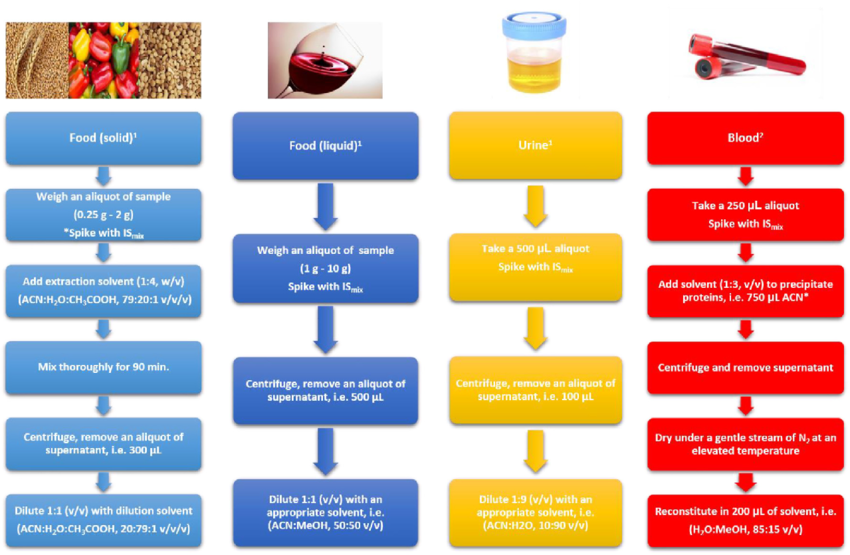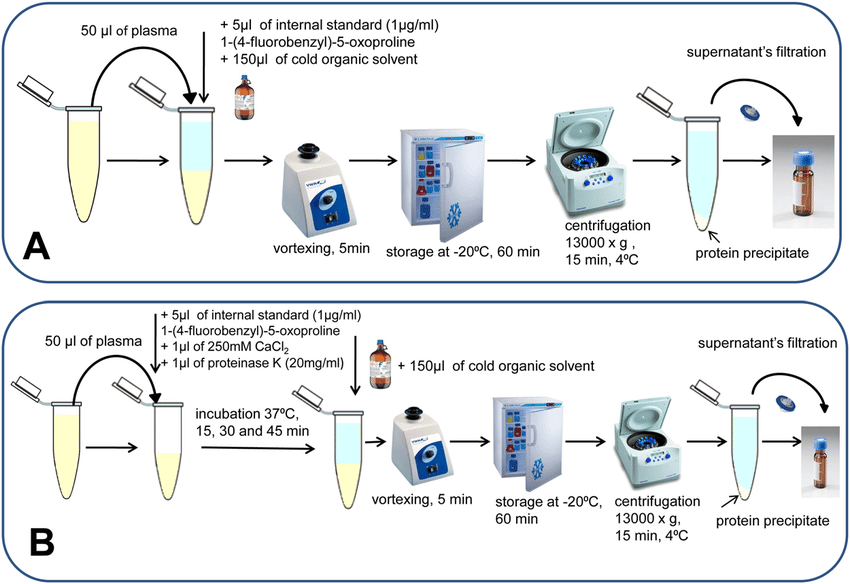LCMS-MS has become the go-to method for analyzing amino acids in biological fluids. But getting accurate results relies heavily on how samples are prepared beforehand. This blog post dives into recent advancements that make sample preparation for LCMS-MS analysis faster and more efficient. We'll also cover practical tips for handling different biological fluids and explore the benefits of commercially available LCMS-MS amino acid analysis kits.
New Techniques for Sample Prep
Traditionally, preparing samples for amino acid analysis involved several steps, like protein removal, adding chemical tags (derivatization), and concentrating the sample. These steps were time-consuming, prone to errors, and could lead to losing some of the amino acids being measured. Recent innovations have addressed these issues:
- "Dilute-and-Shoot" Approach: This method cuts down on handling by skipping derivatization and extensive cleanup. Samples are simply diluted in a suitable solvent and injected directly onto the LC column. This saves time and minimizes amino acid loss.
- Solid-Phase Extraction (SPE): SPE cartridges contain materials that specifically capture amino acids from complex biological mixtures. This removes interfering substances, leading to cleaner data and improved sensitivity.
- Microfluidic Devices: These tiny chips integrate sample prep steps like protein removal, derivatization, and pre-concentration onto a single platform. This miniaturization offers advantages like faster processing, lower sample volumes, and increased automation.
Tips for Different Sample Types
The best sample preparation technique depends on the specific biological fluid being analyzed. Here are some practical pointers:
- Plasma and Serum: Protein removal with organic solvents like acetonitrile is a common first step. SPE cartridges can be used for further cleanup and enrichment of amino acids.
- Urine: Due to its high salt content, urine samples often need desalting techniques like SPE or ultrafiltration before LCMS-MS analysis.
- Cerebrospinal Fluid (CSF): CSF is a relatively clean matrix, and "dilute-and-shoot" approaches might be sufficient for some analyses. However, protein removal might be necessary for samples with high protein content.
Benefits of LCMS-MS Amino Acid Analysis Kits
Commercially available LCMS-MS amino acid analysis kits provide a standardized and streamlined approach for researchers. These kits typically include pre-measured reagents for protein removal, derivatization (if required), internal standards, and optimized LC-MS conditions. This offers several advantages:
- Faster Method Development: Pre-optimized protocols minimize the need for extensive method development, saving researchers time and resources.
- Improved Reproducibility: Standardized protocols with pre-measured reagents ensure consistent results across experiments.
- Enhanced Sensitivity and Specificity: Kits often contain isotopically labelled internal standards, which improve the accuracy of measurement and minimize matrix effects caused by the biological sample itself.
In Conclusion
Advancements in sample preparation techniques have significantly improved the workflow and efficiency of LCMS-MS analysis of amino acids in biological fluids. Techniques like "dilute-and-shoot" strategies, SPE, and microfluidics offer faster processing times, reduced sample manipulation, and improved sensitivity. Additionally, commercially available LCMS-MS amino acid analysis kits provide a standardized and reliable approach for researchers. By leveraging these advancements, scientists can gain deeper insights into the role of amino acids in various biological processes and disease states.


Optimize LC-MS/MS Amino Acid Analysis in Biofluids: New Prep Techniques & Kits